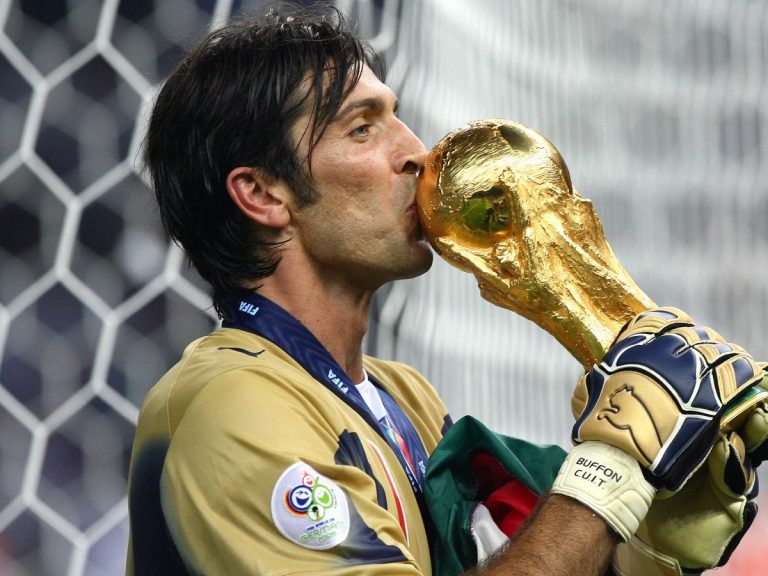In March 1908, a group of footballers left AC Milan in disagreement with the ban on foreign players. Under the arches of the Milanese restaurant “L’Orologio,” a team was born with the idea of internationality. That’s when the official name was announced: Football Club Internazionale, or “Inter.”
The philosophy not only gave birth to the name but also laid the foundation for the entire history of Inter Milan. From day one, the team included Swiss, English, and Argentine players. There were no restrictions based on nationality, only on skill level. Contrary to the Italian conservatism of the early century, the team became a symbol of freedom in football, pushing the boundaries. It was here that the English first had a massive influence on the style of Italian play, introducing a vertical tempo and zonal defense concepts far from the classic catenaccio.
Foreign players, derbies, and the black and blue emblem: the history of Inter Milan
The history of Inter Milan is inseparable from its symbols. The first was the team’s colors—black and blue. It wasn’t just a design choice but a manifesto: night and sky. The second was the nickname “Nerazzurri,” not just describing the colors but signifying identity.
The emblem with the intersecting letters F, C, I, M has remained almost unchanged since 1908. Only the stylistic elements have transformed from a vintage circle to a modern, more concise geometry. The Inter Milan crest with the gold stars for championships is an iconic element familiar to every Italian. Unlike many others, the project did not change its name, even under pressure from the regime in 1928. Instead, the formulation “Ambrosiana-Inter” was born, but the fans continued to call the team by their own name. The history of Inter Milan preserved its original essence even during the dictatorship era.
War years and the era of Virgilio Fossati: navigating through chaos
The First World War divided the championship into before and after. Football was put on hold, but it was during this time that the history of Inter Milan took on a human face. Virgilio Fossati, the captain, coach, and visionary, perished on the front lines. His image is not just a page from the chronicles; he is a canonical figure within the team. It was he who laid the foundations for tactical toughness and leadership.
After the war, Inter emerged on the field differently: strong, combative, united. In 1920, the club secured its first Scudetto—a symbol of Serie A championship. It was simply called a title back then. Later, by analogy with the shield on the chest, the term “Scudetto” emerged. The history of Inter Milan at that moment ceased to be marginal and entered the pantheon of national brands.
From dictatorship to revolution: Inter between dictatorship and Serie A
In the 1930s, the history of Inter Milan changed as the team faced political pressure. Mussolini’s government banned foreign names, so the team had to temporarily use the name “Ambrosiana.” However, fans in the stadiums continued to chant “Inter.” This resistance gave birth to the cult of the black and blue. During those years, the players competed in Italy’s elite division, drawing crowds to the packed stands.
Between 1930 and 1940, the team won two Scudetti and laid a solid foundation for post-war dominance. During this time, Inter not only participated in tournaments but also began to dictate the rhythm of football life across the country.
Post-war revival and the magic of the 60s as part of Inter Milan’s history
The Second World War once again halted progress. However, the 1950s marked the beginning of a vibrant era. Inter Milan reached new heights with the arrival of president Angelo Moratti and coach Helenio Herrera. The leader introduced the concept of “Grande Inter”—a team based on defensive strength, quick transitions to attack, and full discipline.
From 1963 to 1966, Inter won two European Cups (now Champions League), three Scudetti, and two Intercontinental Cups. The club defeated Real Madrid, Penarol, and Santos—absolute powerhouses. Players like Giacinto Facchetti became role models for a generation.
Legendary achievements of the club in the 20th and 21st centuries
The history of Inter Milan is filled with dozens of titles. The main milestones:
- 1909—debut in the Italian championship.
- 1910—first national title.
- 1920—second Scudetto.
- 1964–1965—two consecutive European Cups.
- 1989—Serie A championship with the German trio (Matthaus, Brehme, Klinsmann).
- 1998—UEFA Cup.
- 2006–2010—five consecutive Scudetti.
- 2010—treble under Mourinho: Serie A, Coppa Italia, Champions League.
- 2021—first Scudetto in 11 years after the Juventus era.
- 2023—Champions League final against Manchester City.
Each achievement not only enhances the statistics but also illustrates the multi-layered history of Inter Milan.
Changes in the 21st century: Inter at a crossroads of generations and strategies
At the turn of the century, Inter Milan faced a new reality. After the Moratti era came a period of transformation: the approach to squad building changed, management strategy evolved, and the club’s role in global football shifted. In the early 2000s, they brought in players like Vieira, Ibrahimovic, and Samuel. But the truly iconic breakthrough happened in the 2009/10 season.
Under Jose Mourinho’s leadership, Inter achieved a historic treble: Champions League, Coppa Italia, Serie A championship. The season marked the culmination of the entire post-Soviet history of the club, firmly establishing the Nerazzurri on the football map of Europe as one of the giants. At that moment, history symbolized a renaissance—a return of the team to the top with a new face and a new pace of play.
Change of ownership and a new era of investments
After Moratti’s departure, the club found itself in new hands. The Chinese corporation Suning acquired a controlling stake and began restructuring. Management shifted to a business model focusing on international marketing, digital infrastructure, and active engagement of the Asian audience.
During this period, the history of Inter Milan included new elements: global partnerships, a logo change in 2021, enhanced online interfaces for fans. The management bet on young professionals, strengthened support, and safe interaction of fans with the team structure. This transition underscores that Inter is not just football but a technological sports product of the 21st century.
Return to the top: finals, derbies, and leadership
In 2023, the team once again made a mark in Europe by reaching the Champions League final. The history of Inter Milan once again dominated the headlines of sports publications. The match against Manchester City was a battle not just for the trophy but for respect and brand strength.
Within the country, the team dominated in derbies against AC Milan, secured several convincing victories in Serie A, and won the Supercoppa. Coach Simone Inzaghi built a system combining speed, possession, and vertical attacks. Special attention was given to the development of local and South American talents: Lautaro Martinez became the new face of the brand. The history of Inter Milan showed that traditions can be combined with innovation.
Fans, stadiums, and cultural phenomenon
The San Siro Stadium, or Giuseppe Meazza, became one of the most important symbols of the Milan derby. The history of Inter Milan is inseparable from this arena. Dozens of historic clashes unfolded here, accommodating up to 80,000 spectators. Inter fans create a unique atmosphere: choreographies, songs, flags—a part of the cultural code of the Lombardy region.
The stands host ultras factions, family sectors, and representatives of the diaspora—reflecting the international spirit of the team. It’s not just support; it’s a ritual.
Conclusion
The history of Inter Milan spans over a century of struggle, victories, transformations, and cultural influence. From the first Scudetto to the Champions League final in Istanbul, from Fossati to Lautaro—the path of Inter connects eras, generations, and countries. Each step is accompanied by changes in structure, philosophy, and personnel.
But the main thing is that the team remains true to the idea laid down in 1908: open to the world, ready to compete, unafraid of change. This is an epic of resilience, ideology, and a constant pursuit of perfection.













